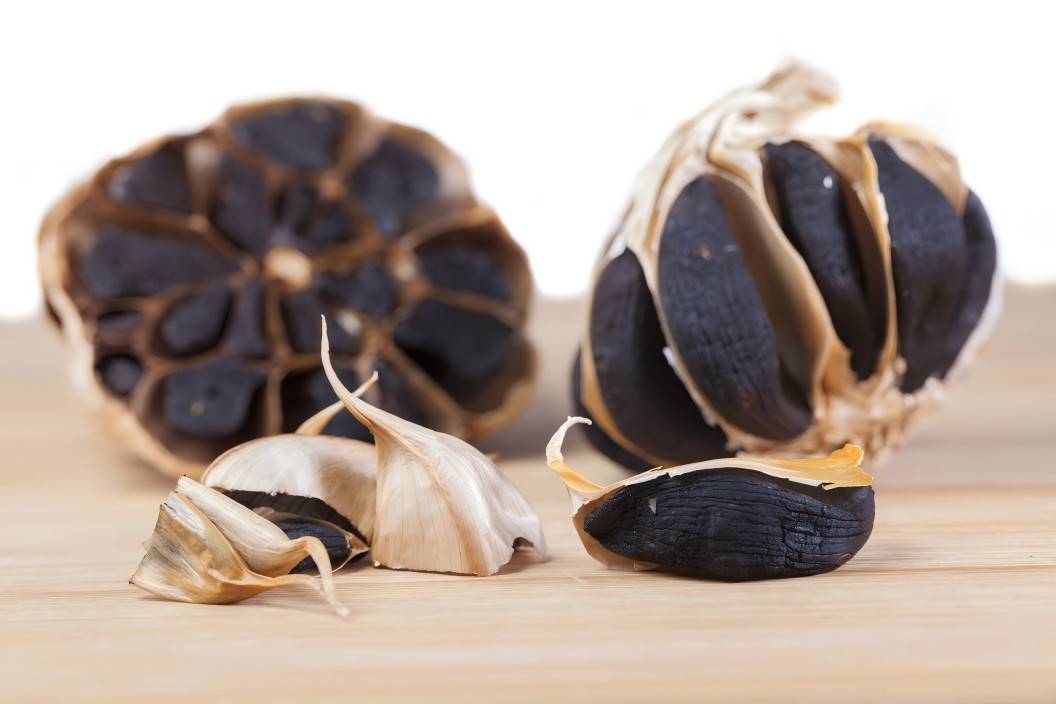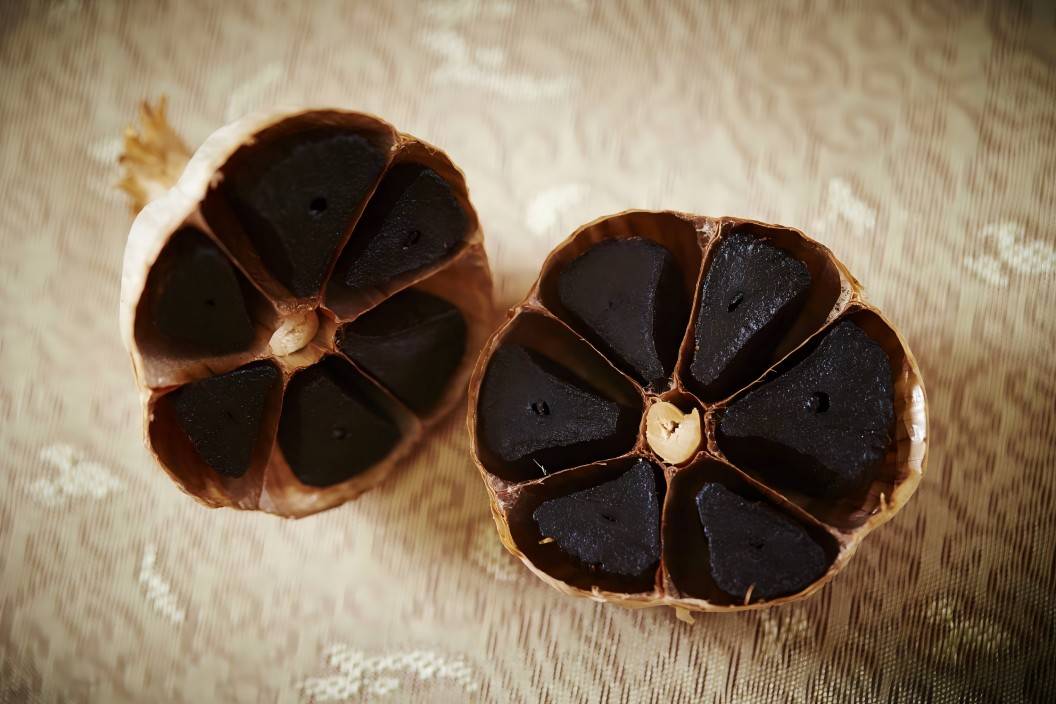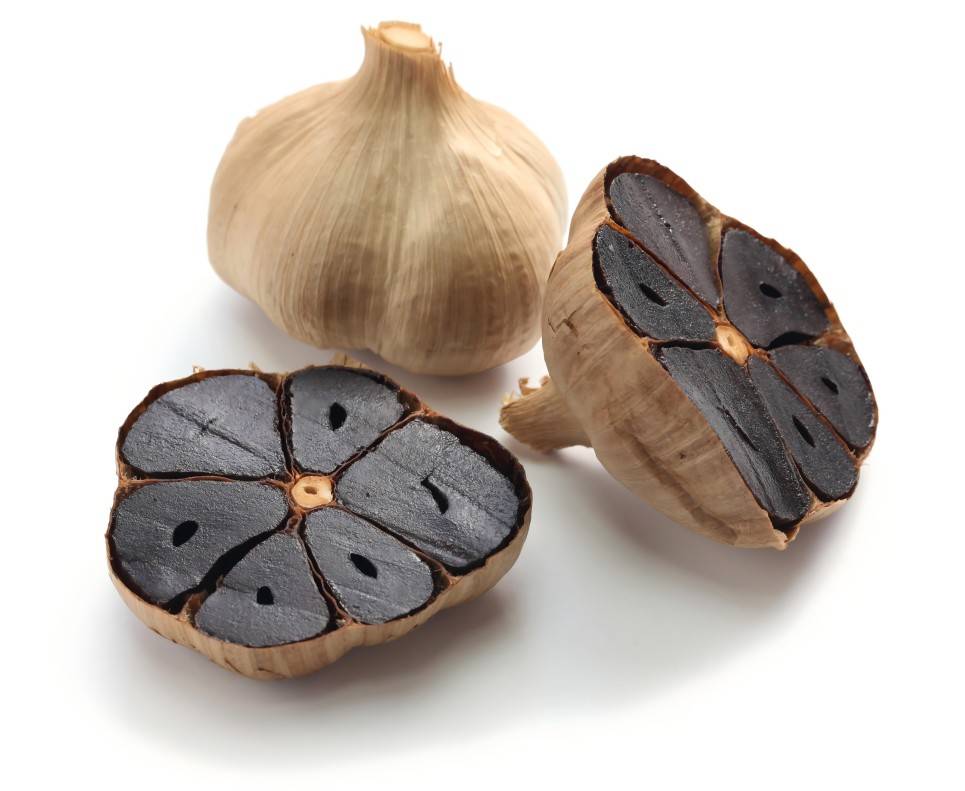What Is the Black Garlic Fermentation Process?
Garlic is the bulb of Allium Sativum L., a species in the onion family Alliaceae. China has a long history of garlic cultivation, with a large cultivated area and high yield. Garlic has become a functional food resource with Chinese characteristics. Garlic has attracted widespread attention from consumers due to its rich nutritional content, low price, excellent health benefits and huge market demand. Currently, domestic consumption is mainly of raw garlic and primary processed products, but the primary processing technology makes it difficult to increase the added value of garlic, which also affects the development of the domestic garlic industry. In particular, the garlic odor (irritating smell and pungent taste) inherent in fresh garlic itself, as well as excessive consumption, can cause a certain degree of damage to the cells of the human gastrointestinal mucosa, making it a bottleneck in the development of the garlic industry [2-3].
However, in foreign countries, high-quality, high-value garlic products have developed rapidly and are well received by consumers. For example, Japanese researchers have developed a series of black garlic products. Black garlic, also known as fermented black garlic, is made by fermenting fresh garlic. It not only retains the original composition and function of garlic, but is also soft and pliable. After eating it, it is soft and sweet, without the pungent taste and irritating odor of garlic.
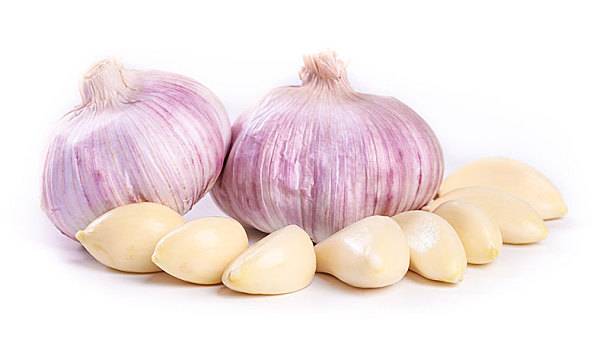
In terms of antioxidant properties and physiological activity, compared with fresh garlic, the content of polyphenols is more than 5 times higher[4], and its superoxide dismutase (SOD) activity is more than 10 times higher[5]. The domestic black garlic processing technology was mainly introduced from Japan and South Korea, so there is no patent right to use the technology. At the same time, due to the differences in domestic garlic varieties and processing methods, the economic benefits of the black garlic industry are not high. This paper will characterize the black garlic processing technology and its application in detail, with the aim of opening up new areas for the development and utilization of domestic garlic resources.
1 Black garlic processing technology
The fermentation process of black garlic is not a process of microbial fermentation, but rather a physical and chemical reaction of substances that occurs when the tissue is damaged under high temperature and high humidity conditions. The main black reaction of black garlic is the Maillard reaction, and the source of blackness is mainly the final product of the Maillard reaction, protein melanin. The later stage of fermentation is accompanied by some enzymatic browning [6]. Currently, black garlic processing is usually divided into two categories: solid-state fermentation and liquid fermentation.
1.1 Solid-state fermentation process
Solid-state fermentation of black garlic refers to a fermentation method in which the garlic itself acts as a solid substrate with no water or essentially no free water [7]. Currently, the domestic production of black garlic mostly uses the solid-state fermentation process.
The main process flow of solid-state fermentation is:
Garlic raw material selection → inspection → cold storage → pretreatment → grading and selection → tray loading → high temperature and high humidity fermentation → black garlic sterilization → black garlic packaging → product quality inspection → finished product [8].
Among these, the most critical steps are the pretreatment of raw materials and high temperature and high humidity fermentation.
At present, there are various pretreatment methods for garlic in the domestic production of black garlic. Qiao Xuguang et al. [9] used pretreatment methods such as low-temperature freezing, ultrasonic treatment and respiratory inhibition treatment on garlic. This pretreatment effectively promoted the content of reducing sugar, amino nitrogen, HMF and total phenol in black garlic, while greatly reducing the processing time, energy consumption and cost of black garlic. Moreover, there was no difference in taste, color, flavor, no difference, slightly improved functional components. Liu Wenhong et al. [10] microwave treatment of garlic, accelerated the lysis of garlic cells and their own fermentation, thereby improving the production efficiency of black garlic. Song Guojun [11] in order to maximize the preservation and increase the physiological activity of garlic, garlic was soaked in a variety of mixed bacterial liquid treatment, also achieved good results.
In the solid-state fermentation process, the most important step is fermentation at high temperatures and high humidity. Fermentation conditions of high temperature and high humidity are the premise for the Maillard reaction to occur in garlic itself, and they are also the main factors affecting the content of effective ingredients in black garlic. Yang Xia [12] proposed a constant temperature and humidity fermentation method, emphasizing that after the garlic is cleaned, it is placed in a box in the fermentation workshop, heated to 50-80 °C, humidified to 50%-80%, and fermented for one month to make black garlic.
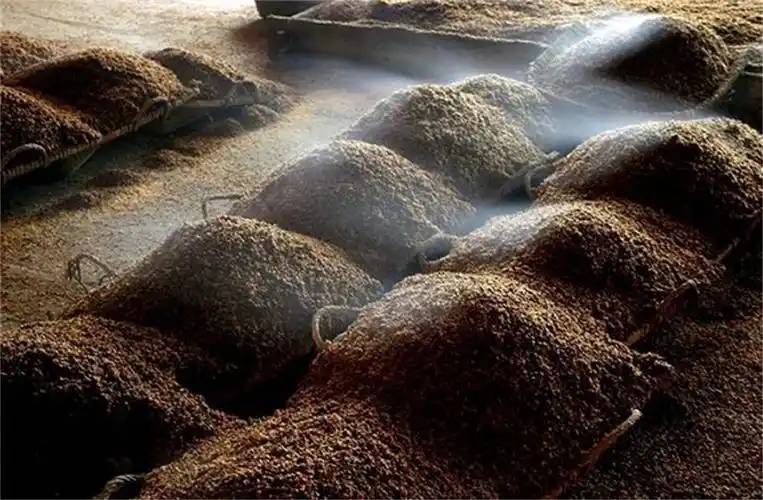
Although this fermentation method is easy to operate and control, it consumes a lot of energy and is not very efficient. In addition, Anton et al. [13] conducted experiments on the effects of constant temperature and variable temperature on the content of active ingredients during the maturation of black garlic. The experiments showed that variable temperature fermentation is beneficial to the accumulation of active ingredients in black garlic, and can better improve the sensory quality of black garlic products, shorten processing time, and save energy. Domestic black garlic production mostly uses variable temperature fermentation. During the use of variable temperature fermentation, the water content, size of the garlic cloves and pH value of the garlic in each batch are different, so it is necessary to have experienced technicians to control how the temperature and time at each stage of the actual fermentation process are determined.
1.2 Liquid fermentation process
Compared with solid-state fermentation, liquid fermentation mainly uses garlic paste or garlic granules that have been broken down to a certain extent as raw materials, mixed with a certain proportion of water as a fermentation substrate for self-fermentation. The process flow of liquid fermentation is as follows:
select fresh garlic → peel garlic cloves → wash with clean water → crush garlic cloves → vacuum-seal in bags → ferment in a fermentation box → remove bags, dry → package → finished product [14].
Most of the existing production processes for black garlic ferment whole garlic cloves, and there are few reports on the liquid fermentation process.
In the liquid fermentation process of black garlic, high-temperature-resistant food bags are mostly used as sealed containers for garlic paste or garlic granules. The sealed high-temperature-resistant food bags prevent the release of bad odors such as sulfides during the fermentation process of black garlic, which greatly improves the working environment. In addition, the liquid fermentation process shortens the fermentation time and increases the content of active substances in black garlic by adding water, sealing and fermenting at a variable temperature.
It is also simple to operate, takes up little space and is convenient for continuous industrial production. The liquid-to-material ratio and the garlic clove crushing process are also important factors affecting the liquid fermentation of black garlic. The size of the garlic cloves and the liquid-to-material ratio directly affect the accumulation of effective substances in black garlic. Luo Cangxue et al. [15] studied the particle size of crushed garlic and the liquid-to-garlic ratio and found that when the particle size of crushed garlic was 4 mm and the liquid-to-garlic ratio was 1:2, the total phenol content in black garlic increased by 5 times, SOD activity increased by 15 times, and soluble sugars decreased by about 30%.
Drying is a unique step in the liquid fermentation process of black garlic. After the garlic has undergone the liquid fermentation process, the black garlic in the fermentation vessel is mixed with a large amount of water and leachate, and the dehydration process can usually be carried out using direct hot air drying or heat pump drying technology.
2 Applications of black garlic
With the development of science and technology, black garlic has developed from a single food industry to various industries such as cosmetics, health products, and medicine due to its extremely high nutritional and medicinal value. The main products are black garlic, black garlic capsules, black garlic sauce, black garlic rice, black garlic puree, black garlic tablets, etc. The application of black garlic is mainly reflected in its nutritional value and medicinal value.
2.1 Nutritional value for consumption
Studies have shown that garlic is very nutritious. Every 100 g of fresh garlic contains 63.8 g of water, 7.2 g of sugar, 5.2 g of protein, 10.2 g of fat, 10 mg of calcium, 12.5 mg of phosphorus, 1.3 mg of iron, VC 7 mg, VB1 0.29 mg, VB2 0.06 mg, niacin 0.8 mg, as well as magnesium and other trace elements, which are all essential nutrients for the human body. And ripe black garlic contains 53.6 g of water, 1100 J of calories, 41.4 g of sugar, 10.4 g of protein, 5.1 g of fat, 13 mg of calcium, 2.1 mg of iron, 36 mg of sodium, 52 mg of magnesium, 930 mg of potassium, 1.4 mg of zinc, VB6 10.726 mg, VB2 0.126 mg, niacin 10.048 mg, etc.[16-18]. It can be seen that black garlic has a significantly lower water content and fat content than garlic, while the protein, sugar, vitamins, etc. are more than twice that of garlic, and the trace elements have also been significantly improved, which is of great significance for maintaining human body life activities. Black garlic is not only rich in essential nutrients that are even beneficial to the body, and has extremely high nutritional value, but also has a sweet and sour taste, leaving no garlic aftertaste and not causing internal heat. In addition, during the production process of black garlic, the garlic converts a large amount of its own protein into the 18 amino acids needed by the human body, which are then quickly absorbed and utilized by the body.
The nutritional value of black garlic is widely used. Black garlic heads and black garlic slices that can be eaten directly have become the dominant products on the market. Black garlic concentrate is also used in soft drinks, alcoholic beverages and condiments (such as sauces, salad dressings, chili sauces, marinades, hot pot seasonings, etc.), nutritional supplements (such as tablets, hard capsules, soft capsules, oral liquid and other dosage forms); black garlic is also used in the production of black garlic preserved fruit, black garlic rice, black garlic dried powder and other foods, greatly enriching the black garlic market and promoting the development of the garlic industry.
2.2 Medicinal and health benefits
Black garlic is rich in nutrients that can improve human body functions, and has various medicinal functions such as eliminating fatigue, improving physical strength, relieving constipation, protecting the liver, improving prostate activity, and promoting sleep[19]. In addition, modern medical research has shown that black garlic also has the health benefits of boosting the immune system, fighting the flu, anti-oxidation, anti-aging, preventing and treating cancer, promoting the recovery of diabetics, lowering blood pressure, lowering blood lipids, preventing blood clots, and lowering cholesterol.
(1) Enhances immune function. Research has shown that the fat-soluble volatile oil in black garlic can significantly improve the phagocytic function of macrophages and enhance the immune system[21]; allicin has the function of activating cell membranes composed of glycolipids, which can increase their permeability, enhance cell metabolism, improve vitality, and the body's immune system is subsequently strengthened. In addition, every 100 g of black garlic is rich in 170 mg of lysine, 223 mg of serine and 7 mg of VC, all of which have the effect of strengthening the body's immune system. It also contains 1.4 mg of zinc, which is involved in the synthesis of hormones and can also improve the body's immunity.
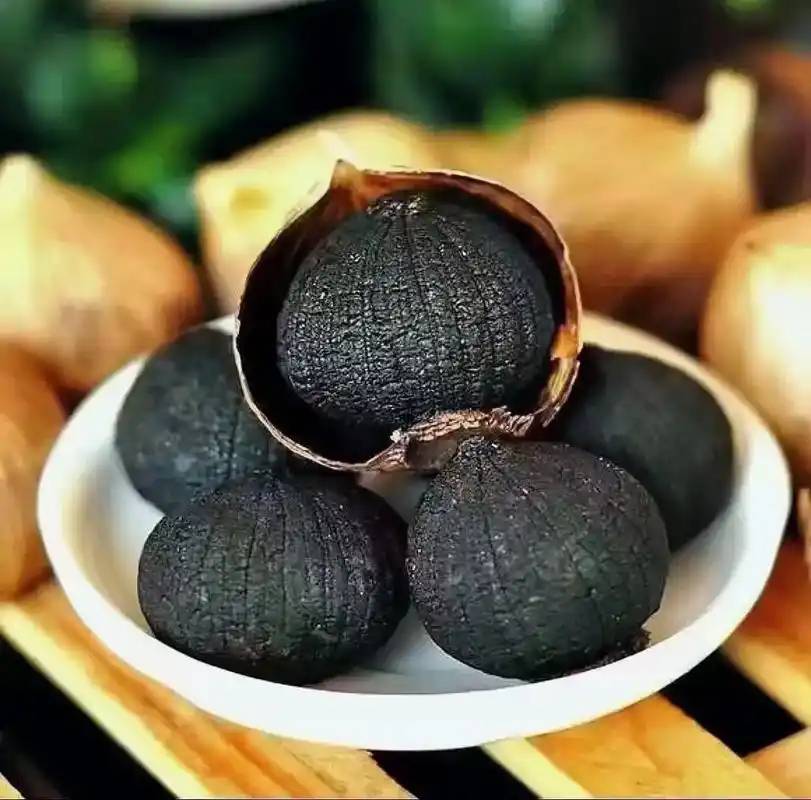
(2) Anti-influenza function: Garlic contains allicin and alliin, which produce allicin when they come into contact with each other. It has a broad-spectrum antibacterial and bactericidal effect, and it has a killing effect on dozens of common viruses and many pathogenic microorganisms. In addition, the volatile substances and leachates (containing sulfide compounds) of black garlic have a significant inhibitory and killing effect on a variety of pathogenic bacteria in test tubes. It is currently one of the strongest antibacterial and fungicidal natural plants discovered [22].
(3) Anti-oxidation and anti-aging functions. Modern scientific research believes that the cause of human aging and aging-related diseases lies in the imbalance between the production of highly active free radicals in the human body and the action of endogenous antioxidant enzymes to remove free radicals, resulting in excessively high concentrations of free radicals in the body. Excessive free radicals can cause oxidative damage to cell membrane lipids, nucleic acids, and proteins, resulting in the destruction of related cell structures and functions, thereby leading to the occurrence and development of related diseases. The content of polyphenols in black garlic is more than five times that of garlic, and its SOD activity is more than ten times higher than that of garlic. Experiments have shown that an appropriate amount of black garlic can reduce the content of malondialdehyde and increase the activity of antioxidant enzymes in mice, especially the effect on glutathione peroxidase is more obvious, exhibiting strong antioxidant and anti-aging effects [23].
(4) Cancer prevention and treatment. Domestic and foreign scholars have conducted a series of chemical, clinical and pharmacological studies on garlic, which have proved that garlic has a significant inhibitory effect on various tumors such as colon cancer, liver cancer, stomach cancer, breast cancer and esophageal cancer [24]. However, the chemical substances in garlic are not stable, and a good clinical effect cannot be achieved. Xiao Xiaolan et al. [25] proved through experiments that black garlic can induce apoptosis of gastric cancer cells by activating Caspase. Wang Xuping et al. [26] proved that allicin in black garlic can effectively inhibit the growth of colon cancer HT29 cells, which leads to apoptosis of cancer cells. Tsubura et al. [27] found in experiments that the sulfides in allicin can effectively inhibit breast cancer, and that selenium and organic sulfur nucleoside analogues can protect against breast cancer.
(5) Promote the recovery of physical fitness in diabetic patients. Black garlic can affect the synthesis of glycogen in the liver, reduce blood glucose levels and increase plasma insulin levels. Allicin can lower blood glucose levels in normal people. Black garlic also contains S-methylcysteine sulfoxide and S-allylcysteine sulfoxide. These sulfides can inhibit G-6-P enzyme NADPH, prevent islet destruction, and have a hypoglycemic effect; allyl disulfide in black garlic also has this effect [28]; the alkaloids contained in black garlic also have ingredients that lower blood sugar, increase insulin function, and more importantly, have no effect on normal blood sugar levels.
(6) Lower blood pressure, lower blood lipids, prevent blood clots, and lower cholesterol. Zhang Tingting et al. [29] used a randomized grouping method to divide mice into 5 groups, and measured the effects of allicin on serum triglycerides, total cholesterol, high-density lipoprotein cholesterol, and low-density lipoprotein cholesterol, as well as the effects on serum lecithin cholesterol acyltransferase, cardiac lipoprotein lipase, and hepatic lipase activity. The experiment proved that allicin has a significant blood pressure-lowering and lipid-lowering effect. Ao et al. [30] found that dietary supplementation with black garlic powder has a positive effect on cholesterol metabolism. High low-density lipoprotein (LDL) and total cholesterol concentrations can induce atherosclerosis and cardiovascular disease. In the experiment, the addition of black garlic powder to the diet significantly inhibited cholesterol synthesis in the body, thus greatly helping the treatment of cardiovascular and cerebrovascular diseases.
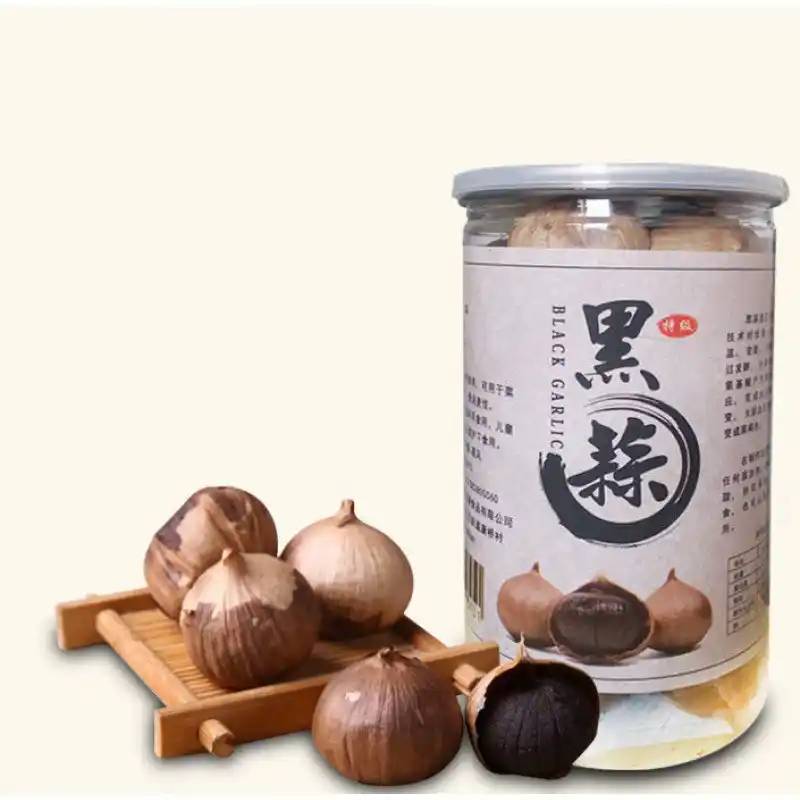
3 Conclusion
Fermentation of garlic into black garlic significantly enhances its nutritional value. As a raw material with high nutritional and medicinal value, black garlic has been used in many fields. However, as an emerging product, black garlic has a long production cycle, product quality is difficult to control, and many of its pharmacological effects are still unclear.
With the improvement of people's living standards, consumers' demand for the nutritional and health benefits of black garlic is also increasing. At present, a single black garlic product can no longer meet people's needs. Compound black garlic products with therapeutic and health benefits will emerge. Black garlic dry powder and other dry products will have good prospects for development as a good compound carrier.
References:
[1] Yan Changkai, Zeng Fandian. Research progress on the main chemical components and pharmacological effects of garlic [J]. Chinese Journal of New Drugs, 2004, 13(8): 688-691.
[2] Zhang Tingting, Liu Xiyun. Development and application of garlic products [J]. Journal of Anhui Normal University (Natural Science Edition), 2001, 24(1): 54-56.
[3] Bian Maokai, Wang Cuiying. Analysis and outlook of garlic market [J]. Processing of Agricultural Products, 2011(5): 14-15.
[4] Lian Yi, Qiao Xuguang, Li Yan, et al. Research on the characteristics of garlic polyphenol oxidase [J]. Food Science, 2007, 28(11): 290-293.
[5] Wang Xuefeng, Shen Songdong, Jie Yuguan, et al. Isolation and purification of garlic superoxide dismutase and its properties [J]. Anhui Agricultural Science, 2001, 29(3): 408-409.
[6] Cui Chang, Zhang Yongzhong, Li Wenbin, et al. Research progress of protein melanin [J] . Food Science, 2007, 28(8): 517-520.
[7] Li Lang, Yang Xu, Xue Yongliang. Research progress of modern solid-state fermentation technology, equipment and application [J]. Journal of Henan University of Technology (Natural Science Edition), 2011, 32(1): 89-94.
[8] Bian Qianqian, Li Jilan, Lu Fei. China's black garlic export situation and international market analysis [J]. China Fruit and Vegetable, 2012(3): 47-48.
[9] Qiao Xuguang, Li Ningyang, An Dong, et al. A method for producing black garlic: China, 103284091 A [P] . 2013-09-11.
[10] Zhejiang Chinese Medical University. A method for producing black garlic using a combination of microwave and fermentation: China, 102578507 A [P] . 2012-07-18.
[11] Henan Mushan Black Garlic Bioengineering Co., Ltd. Method for producing fermented black garlic: China, 102048129 A [P] . 2011-05-11.
[12] Yang Xia. Production and processing method for black garlic: China, 101731605 A [P] . 2010-06-16.
[13] Anton. Research on black garlic processing technology [D]. Tai'an: Shandong Agricultural University, 2011.
[14] Shaanxi University of Science and Technology. A method for preparing black garlic by liquid fermentation: China, 102919747 A [P]. 2013-02-13.
[15] Luo Cangxue, Su Dongxia, Chen Shuyu. Optimization of the fermentation process for liquid black garlic [J] . Transactions of the Chinese Society of Agricultural Engineering, 2013, 29(18): 292-297.
[16] Lei Fengchao, Hao Guo, Zhu Li, et al. Research progress on the nutritional value and health benefits of black garlic [J] . Food Industry Science and Technology, 2012(13): 429-432.
[17] Wang Weidong, Wang Ying, Wang Chao, et al. Effect of the Maillard reaction on the nutritional composition and antioxidant properties of garlic [J]. Food Science and Technology, 2013, 38(4): 42-48.
[18] Hang Dong. The miraculous black garlic [J]. China Food, 2012(23): 64-65.
[19] Liu Dongmei, An Xueming. A review of the activity of organic sulfur compounds in garlic [J]. Journal of Changchun University of Traditional Chinese Medicine, 2005, 21(4): 54.
[20] Liu Xiaoxu, Yang Guiqing, Wang Yuanyuan, et al. Research progress on the pharmacological effects of black garlic [J]. Chinese Health Care and Nutrition (Mid-Year Issue), 2013 (4): 97-98.
[21] Sankaranarayanan A, Narender T, Kumar S, et al. Allium sativum constituents: effect on free radical generation from ratneutrophils [J]. Cell Mol Biol (Noisylegrand), 2007, 53(5): 63-67.
[22] Shi Wei, Zhang Yan, Bai Yang, et al. Study on the antibacterial effect and stability of allicin [J]. Food and Fermentation Technology, 2011, 47(3): 76-86.
[23] Zhu Bingqiao, Wu Haige, Liu Yuanyuan, et al. Research on the antioxidant activity of black garlic [J]. Food Research and Development, 2008, 29(10): 56-61.
[24] Lee E N, Choi Y W, Kim H K, et al. Chloroform extract of aged black garlic attenuates TNF-α-induced ROS generation VCAM-1 expression, NF-κB activation and adhesiveness for monocytes in human umbilical vein endothelial cells [J]. Phytother Res, 2011, 25(1): 92-100.
[25] Xiao X, Peng J, Su Q, et al. Diallyl trisulfide induces apoptosis in human gastric cancer C80B cells through the caspase-3 pathway. Cancer, 2006, 25(10): 1247-1251.
[26] Wang X P, Zhao L, Wang R, et al. Research on the effect and mechanism of allicin on the proliferation of human colon cancer HT29 cells [J]. Progress in Modern General Surgery in China, 2007, 10(4): 306-309.
[27] Tsubura A, Iai Y C, Kuwata M, et al. Anticancer effects of garlic and garlic derived compounds for breast cancer control [J]. Anti Cancer Agents Med Chem, 2011, 11(3): 249-253.
[28] Osman M, Adnan A, Salmah Bakar N. Alashkham fallicin has significant effect on autoimmune anti-islet cell antibodies in type 1 diabetic rats [J]. Pol J Pathol., 2012, 63(4): 248-254.
[29] Zhang T T, Tong X Q, Liu X Y. Research on the mechanism of hypolipidemic effect of allicin [J]. Chinese Journal of Experimental TCM Formulae, 2007, 13(2): 32-35.
[30] Ao X, Yoo J S, Zhou T X, et al. Effects of fermented garlic powder supplementation on growth performance, blood profiles and breast meat quality in broilers [J]. Live-stock Science, 2011, 141(1): 85-89.


 English
English French
French Spanish
Spanish Russian
Russian Korean
Korean Japanese
Japanese